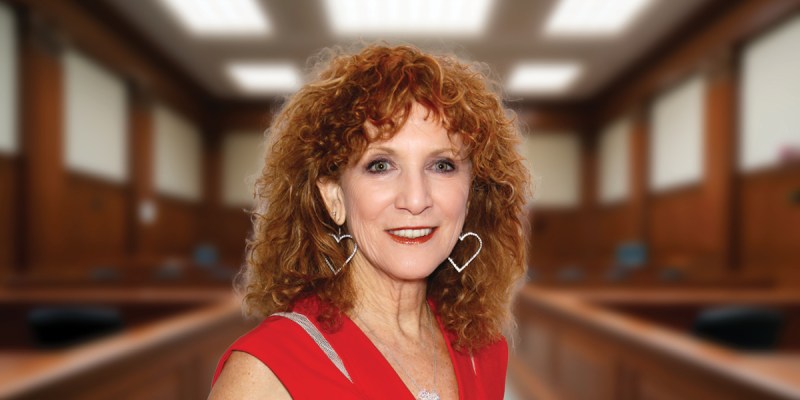By Patricia Demchak
After conducting studies that found teen drug experimentation starting as early as the sixth grade, a coalition of more than 18 community organizations and agencies is taking the first steps in its plan to prevent drug abuse in the realm of Community Board 8.
The coalition, Central Queens Partnership, conducted two years of community studies and surveys that revealed children in the area generally benefit from fewer factors contributing to drug use and more factors protecting them from risky behavior than the national average. But the results also revealed several areas of concern, particularly drug experimentation during the middle-school years.
More than 15 percent of sixth graders surveyed said they had tried alcohol, while more than 5 percent had tried cigarettes and inhalants. By eighth grade those numbers had risen to nearly 35 percent for alcohol, 8 percent for inhalants and marijuana, and more than 20 percent for cigarettes.
“We decided that early initiation is of concern,” said Rogerio Pinto, project coordinator for the group and a social worker at Queens Child Guidance Center. He said that after analyzing the studies’ results, the group identified three primary areas of concern. Most important was the finding that kids are experimenting with drugs at a young age, Pinto said.
Among the partnership’s other top concerns are adolescents’ perceptions that their parents are favorable toward or do not mind the use of certain drugs, particularly alcohol.
Because these factors lead to a higher risk of drug use, the Central Queens Partnership hopes to focus on educating parents and connecting community members and organizations to work together in the fight against drug use.
The partnership began offering substance abuse prevention workshops for parents in December and will kick off its first public event this month with a “Spring Fun Day” aimed at inspiring communication and conversation within families and the community.
The partnership, whose members range from social workers to hospital representatives and elected officials, also publishes an annual resource book of prevention services for adolescents. The resource book provides a comprehensive list of services, including recreational programs, treatment centers and school-based programs.
So far 16 parents have completed the five-week cycle of workshops and six more are participating, said Mary Clarke, director of the workshops and a social worker at Queens Child Guidance Center. Called “Preparing for the Adolescent Years,” the free workshops meet every Tuesday evening at JHS 168 on 76th Road from 6 p.m. to 8 p.m.
While all parents are welcome to attend any of the sessions, the classes are tailored to parents of children in grades four through eight. The next cycle of workshops was set to begin April 9, Clarke said.
Meanwhile, the partnership also is gearing up for its biggest outreach yet, a free community event Saturday, April 20, at the JHS 168 Beacon Program. The Spring Fun Day event will run from 11 a.m. to 3 p.m. and will include lunch, student and parent forums, skits, dances and prizes. The coalition plans to invite more than 1,000 adolescents and their parents and expects more than 200 to attend.
Jackie Cohen, head of the JHS 168 Beacon Program, said the April event should jump-start a series of prevention-oriented programs by the partnership, which evolved out of the Beacon advisory board and first met in May 2000. The coalition now generally meets once a month at Aurora Concepts, an adolescent substance abuse and health care program on Parsons Boulevard.
The partnership began research in 2000 after the community won a federal Center for Substance Abuse Prevention grant that provides $180,000 per year for three years, Pinto said.
Only two other communities in New York City qualified for the federal grant, and one has since been “defunded,” according to Pinto. He said other New York communities had a greater demand for prevention but lacked the organizational structures required to support a program.
“Harlem had a much greater need than we did, but one of the major requirements for this grant is you need to have some sort of coalition already in place in the community and we had a model coalition in the advisory board at Beacon,” Pinto said. Thus far the grant has been used for a comprehensive survey of risk indicators and community profiles that helped the coalition develop a plan for action.
“The first year the Central Queens Partnership existed was all research,” Cohen said. “One of the things that came out of it was the issue of substance abuse as well as needing more communication with parents and the community.”
Among the risk factors studied were community characteristics, such as the availability of alcohol, unemployment rates and poverty indicators; family factors, including numbers of arrests, child abuse cases and adults with sexually transmitted diseases; and school and individual data, such as proficiency levels in various academic subjects, suicide death rates and adolescent pregnancies.
Each of these factors has shown a correlation to adolescent drug abuse and thus can be used to predict teen trends, Pinto said. By targeting risk factors that are on the rise, he said, the group hopes to bolster prevention.
Reach reporter Patricia Demchak by e-mail at Timesledger@aol.com or call 229-0300, Ext. 155.

































